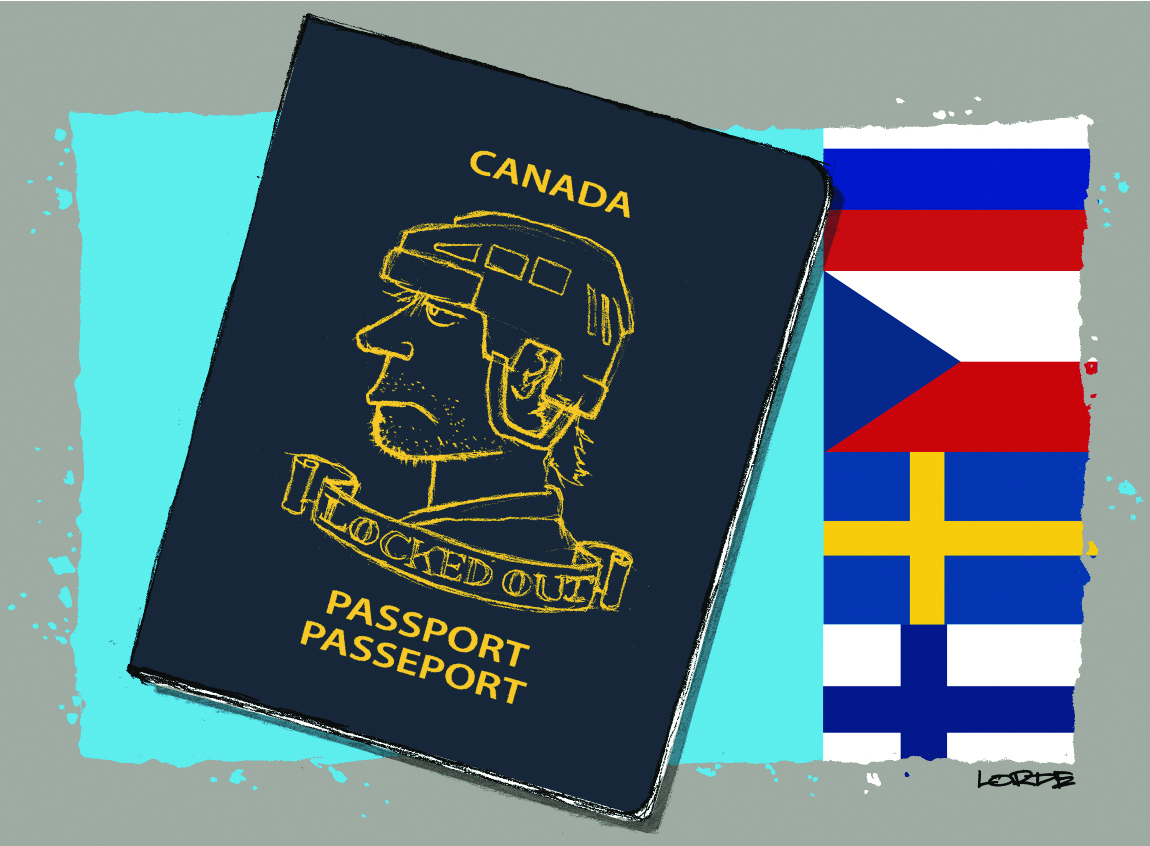September 7, 2011 was the saddest day in hockey history.
On that day, the plane carrying the members of Lokomotiv Yaroslavl of Russia’s Kontinental Hockey League crashed on takeoff from Tunoshna Airport near the city of Yaroslavl. No one from Lokomotiv onboard survived the accident.
Among the deceased were NHL veterans Pavol Demitra, Ruslan Salei, Karlis Skrastins, Josef Vasicek, and Karel Rachunek, as well as its new head coach, Brad McCrimmon. Two players from Russia’s 2011 World Junior gold medal winning team, Daniil Sobchenko and Yuri Urychev, both 20, also died.
In an instant, an entire hockey team was gone.
The team chose not to play in the KHL for the 2011-12 season, but instead joined Russia’s top minor league, the Major Hockey League (VHL), mid-season with a make-shift roster.
This season, Lokomotiv made its return to the KHL, but the effort to field a winning team, yet alone a competitive one, would require one of the greatest rebuilding projects in the history of professional sports.
First, they needed a head coach, and they found one in Tom Rowe, a former assistant coach with the Carolina Hurricanes. Then, an entire roster of players was needed. The KHL helped out by holding a draft made up of unprotected players from other KHL clubs. The league also waived Lokomotiv’s limit of import players and even offered an automatic playoff spot, which the team declined.
The team proceeded to sign KHL veterans such as forwards Alexei Kalyuzhny and Mikelis Redlihs, as well as forward Niklas Hagman who played 770 games in the NHL. On defence, Vitaly Vishnevski, who played seven seasons with Salei for the Mighty Ducks of Anaheim, returned for a second stint with Yaroslavl. The team also signed Swedish national team defenceman Staffan Kronwall and former Winnipeg Jet Mark Flood. In goal, Lokomotiv signed former KHL All-Star Vitaly Kolesnik, as well as former AHL All-Star Curtis Sanford. Eight players from Lokomotiv’s VHL team also made the jump to the KHL. A short time later, they were aided by the NHL lockout with three players joining the team: Colorado goalie Semyon Varlamov, Florida defenceman Dmitri Kulikov, and Columbus forward Artem Anisimov.
The team began the season with a road trip starting in Novosibirsk, where Lokomotiv won 5-2, a victory celebrated by KHL fans all over Russia. They made their emotional debut at home against Atlant Moscow on Sept. 16. The home team lost 2-1, and despite the new pre-game tradition of three bell tolls to remember the victims, the game returned a sense of normalcy lost by the disaster. After the loss, the team went on a six-game winning streak and forward Daniil Apalkov, who played on the VHL team last season, was named KHL Rookie of the Month for September. With Varlamov’s 1.74 GAA (goals against average) and Anisimov eventually scoring 29 points in 36 games, the team won 22 of its first 27 games.
However, as the NHL lockout ended, the team’s play tapered off. Lokomotiv went 12-13 afterwards, but it was good enough for fourth place in the Western Conference and they made history as the first team in KHL history to go undefeated in overtime and shootouts in a season (10-0). The team played Severstal Cherepovets in the first round of the playoffs and the teams exchanged 2-1 wins in the first two games. In game three, Severstal scored with 33 seconds left to win 3-2 and in game four, the longest in KHL history, Sanford made a record-breaking 80 saves but Severstal won 3-2 in triple OT. Lokomotiv came back with a 3-2 win in game five, but was eliminated from the playoffs in game six.
Lokomotiv Yaroslavl was not the first sports team to be involved in an air disaster, and other teams who were affected eventually returned to their previous levels of success. However, this team is one of the rare ones to become so good so quickly. People may remember Lokomotiv for tragedy, but they should also be remembered for victory.





